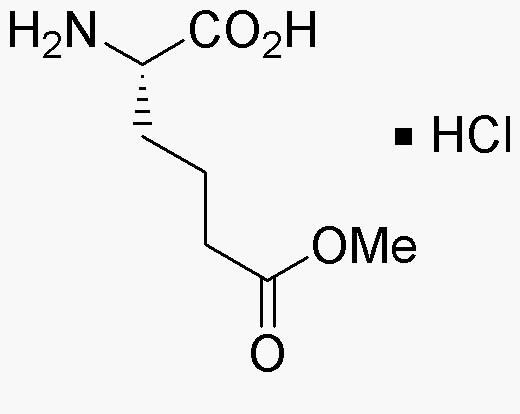L-a-Aminoadipic acid d-methyl ester hydrochloride is widely utilized in research focused on:
- Pharmaceutical Development: This compound serves as an important intermediate in the synthesis of various pharmaceuticals, particularly those targeting neurological disorders, enhancing drug efficacy and specificity.
- Biochemical Research: It is used in studies related to amino acid metabolism, providing insights into metabolic pathways and potential therapeutic targets for metabolic diseases.
- Polymer Chemistry: The compound can be incorporated into polymer formulations, improving the properties of biodegradable plastics, which are increasingly important in sustainable materials development.
- Food Industry: It has applications in food science as a flavoring agent or preservative, contributing to food safety and quality while offering a natural alternative to synthetic additives.
- Cosmetic Formulations: The compound is explored in cosmetic products for its potential skin benefits, such as moisturizing and anti-aging properties, appealing to the growing demand for effective skincare solutions.
Información general
Propiedades
Seguridad y normativas
Aplicaciones
L-a-Aminoadipic acid d-methyl ester hydrochloride is widely utilized in research focused on:
- Pharmaceutical Development: This compound serves as an important intermediate in the synthesis of various pharmaceuticals, particularly those targeting neurological disorders, enhancing drug efficacy and specificity.
- Biochemical Research: It is used in studies related to amino acid metabolism, providing insights into metabolic pathways and potential therapeutic targets for metabolic diseases.
- Polymer Chemistry: The compound can be incorporated into polymer formulations, improving the properties of biodegradable plastics, which are increasingly important in sustainable materials development.
- Food Industry: It has applications in food science as a flavoring agent or preservative, contributing to food safety and quality while offering a natural alternative to synthetic additives.
- Cosmetic Formulations: The compound is explored in cosmetic products for its potential skin benefits, such as moisturizing and anti-aging properties, appealing to the growing demand for effective skincare solutions.
Documentos
Hojas de datos de seguridad (HDS)
La SDS proporciona información de seguridad completa sobre la manipulación, el almacenamiento y la eliminación del producto.
Especificación del producto (PS)
La PS proporciona un desglose completo de las propiedades del producto, incluida la composición química, el estado físico, la pureza y los requisitos de almacenamiento. También detalla los rangos de calidad aceptables y las aplicaciones previstas del producto.
Certificados de análisis (COA)
Busque certificados de análisis (COA) ingresando el número de lote del producto. Los números de lote y de partida se pueden encontrar en la etiqueta de un producto después de las palabras "Lote" o "Lote".
Número de catálogo
Número de lote/lote
Certificados de origen (COO)
Este certificado de origen confirma el país en el que se fabricó el producto y también detalla los materiales y componentes utilizados en él y si se deriva de fuentes naturales, sintéticas u otras fuentes específicas. Este certificado puede ser necesario para cumplir con las normativas aduaneras, comerciales y regulatorias.
Número de catálogo
Número de lote/lote
Hojas de datos de seguridad (HDS)
La SDS proporciona información de seguridad completa sobre la manipulación, el almacenamiento y la eliminación del producto.
DownloadEspecificación del producto (PS)
La PS proporciona un desglose completo de las propiedades del producto, incluida la composición química, el estado físico, la pureza y los requisitos de almacenamiento. También detalla los rangos de calidad aceptables y las aplicaciones previstas del producto.
DownloadCertificados de análisis (COA)
Busque certificados de análisis (COA) ingresando el número de lote del producto. Los números de lote y de partida se pueden encontrar en la etiqueta de un producto después de las palabras "Lote" o "Lote".
Número de catálogo
Número de lote/lote
Certificados de origen (COO)
Este certificado de origen confirma el país en el que se fabricó el producto y también detalla los materiales y componentes utilizados en él y si se deriva de fuentes naturales, sintéticas u otras fuentes específicas. Este certificado puede ser necesario para cumplir con las normativas aduaneras, comerciales y regulatorias.


